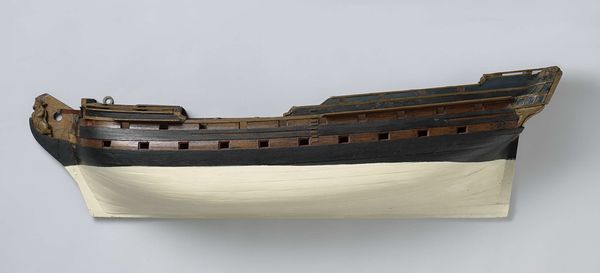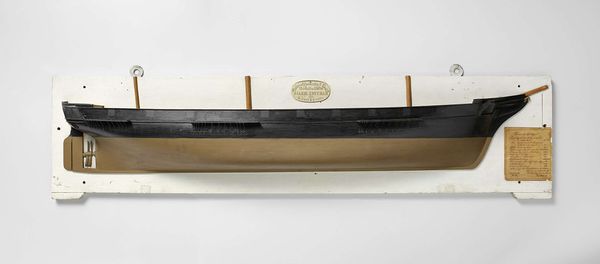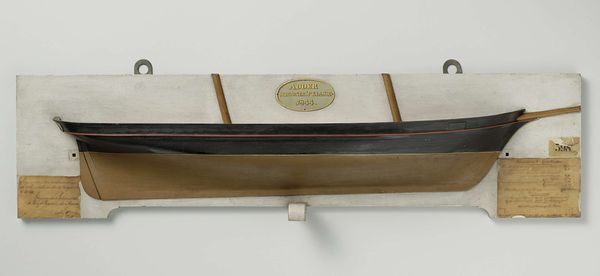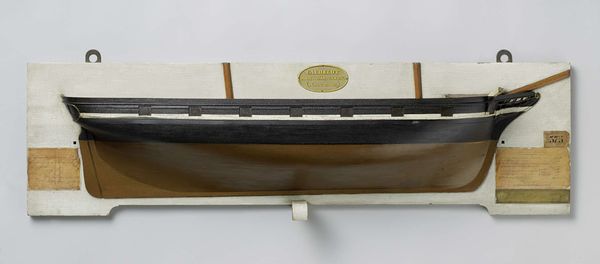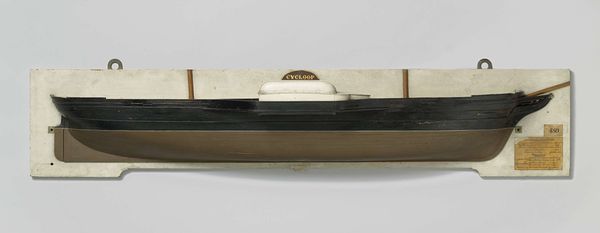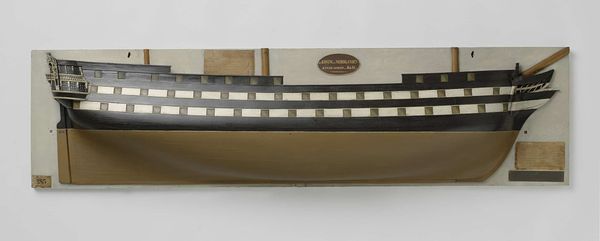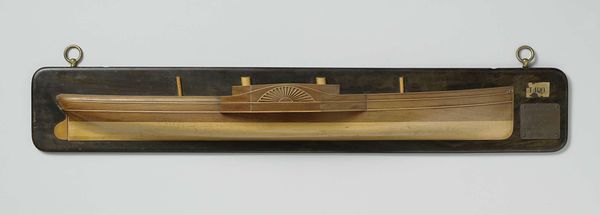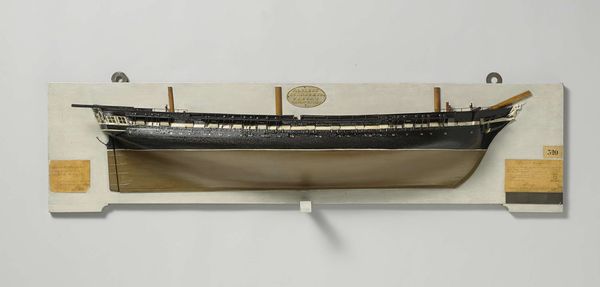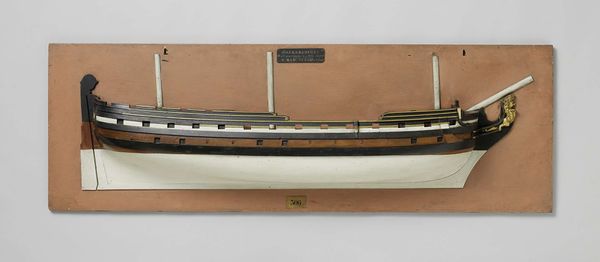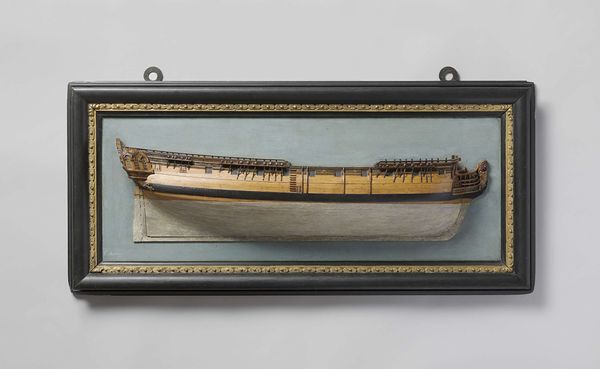
carving, wood
#
carving
#
wood
#
realism
Dimensions: height 28 cm, width 146.5 cm, depth 15.5 cm
Copyright: Rijks Museum: Open Domain
Curator: The elegance of this small, wall-mounted sculpture really strikes me; a carved, wooden half-hull of a schooner dating back to sometime between 1860 and 1880. The black paint contrasts well with the white. What are your first thoughts, Editor? Editor: Immediately, I think of diasporas, the stories of seafaring communities—specifically, in relation to the artist. There’s a certain melancholy, a quiet monument to those who have been lost or displaced by sea travel. What was it like to live on a schooner? Curator: Half-models like this, constructed from wood, served a vital role in 19th-century shipbuilding. Before complex blueprints or CAD designs, these precisely crafted models allowed shipbuilders to visualize and refine the hull design, ensuring stability and efficiency on the water. I imagine they were more than models; functional objects of art, expressions of civic pride. Editor: Exactly. But if this model was so ubiquitous, what meanings do they hold for minority communities excluded from mainstream representation in Maritime culture? Is this vessel modeled after one involved in exploitation or does it represent mobility and emancipation? Curator: It is tempting to apply those contemporary theoretical lenses. There is so much that can be read into the use of specific materials. After all, each type of wood carries symbolic and historical associations. In terms of historical reception, these models served to validate maritime innovation in trade and naval capacity. Editor: Right. So thinking about realism as a style and mode of art, perhaps the stark detail reflects a particular aspiration for progress—perhaps as an expression of national or corporate ambitions. This model, though beautiful, risks presenting a kind of sanitized, glorified version of the complex dynamics that underpinned seafaring during the period it was produced. What kind of narratives would an artist want to present versus conceal about ships? Curator: These are excellent questions that invite viewers to consider the legacies of shipping industries from various angles, the benefits and the burdens. Thinking critically about historical objects requires an acknowledgement of intersectional historical currents and forces. Editor: Precisely. It encourages a deeper, more informed, and equitable relationship with both the piece and its multifaceted origins. Curator: Yes. And maybe seeing it here encourages more interest in and research of shipbuilding, of maritime activities both in its period of creation and to modern times.
Comments
No comments
Be the first to comment and join the conversation on the ultimate creative platform.
